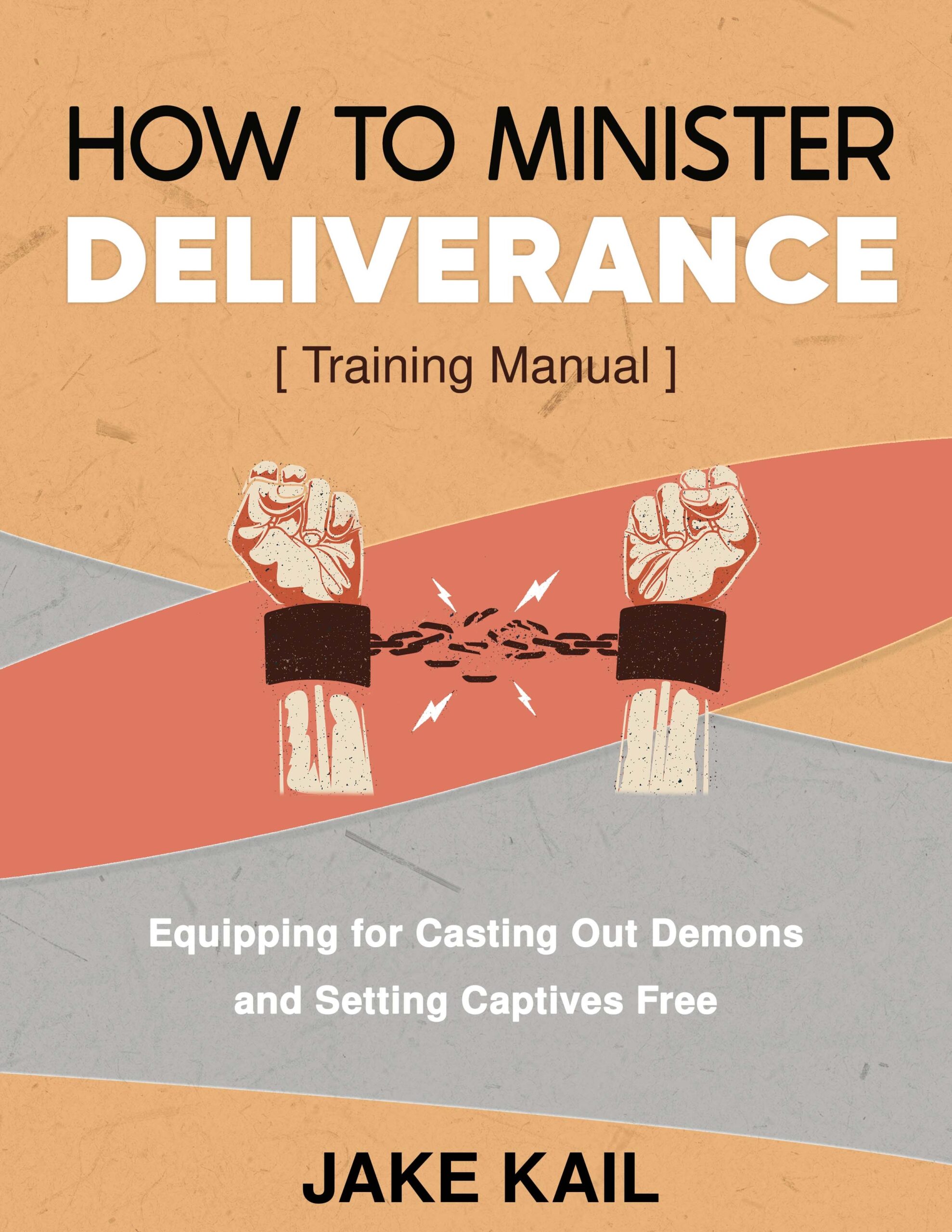
How Predators and Abusers Blend Into the Church
February 15, 2022
Special Announcement: Online School of Deliverance Starting March 29th!
March 4, 2022
Over the last year, I have sensed a greater emphasis on equipping others to minister deliverance. That is one of the reasons why I wrote a deliverance training manual, How to Minister Deliverance. God is restoring deliverance to the church, but many believers feel intimidated or ill-equipped to cast out demons. Perhaps the only examples they have seen use bizarre, unbiblical, or unhelpful methods.
The following is an excerpt from How to Minister Deliverance that describes a process of equipping based on how Jesus discipled His followers. Whether you are training others or seeking to be equipped yourself, you can glean from this model of equipping.
The Example of Jesus
To equip is to empower and enable someone else to function in a task, ministry role, job, gift, etc. The role of leaders in the church is not only to minister, but to equip others to minister: “And He Himself gave some to be apostles, some prophets, some evangelists, and some pastors and teachers, for the equipping of the saints for the work of ministry, for the edifying of the body of Christ” (Ephesians 4:11-12, emphasis added).
Jesus gave us a great example to follow in how to disciple and equip others. Consider the following Scriptures from the Gospel of Mark.
Then Jesus said to them, “Follow Me, and I will make you become fishers of men.” (Mark 1:17)
And He went up on the mountain and called to Him those He Himself wanted. And they came to Him. Then He appointed twelve, that they might be with Him and that He might send them out to preach, and to have power to heal sicknesses and to cast out demons. (Mark 3:13-15)
And He called the twelve to Himself, and began to send them out two by two, and gave them power over unclean spirits… So they went out and preached that people should repent. And they cast out many demons, and anointed with oil many who were sick, and healed them. (Mark 6:7, 12-13)
Notice some things about the way that Jesus discipled and equipped His followers:
-
- Jesus took the twelve disciples on an intentional journey in order to equip them. In the process of following Jesus, they would “become fishers of men.” Transformation would occur—they would become different people, able to do different things than they had ever done before.
- Jesus did not expect His followers to be able to fulfill their assignment without a process of discipleship/equipping. He didn’t simply give them a task and tell them to do it; He led them on a journey that enabled them to operate in their calling.
- Looking at the above Scriptures as well as other passages throughout the Gospels, we can see that the discipleship and equipping process that Jesus led the disciples through was multi-faceted.
Five Components of Equipping
Equipping happens over the process of time and ideally involves multiple components. Below are five facets of how Jesus discipled. We can apply this to many areas of life and ministry, but I will use these concepts to describe how you can equip others to minister deliverance. Or, if you are looking to be equipped in deliverance, it can give you some ideas as to what might be helpful for you to learn and grow. (Please note that the following components are not necessarily steps that must happen in the order in which they are listed.)
1. Connection (Mark 3:13-15)
Jesus first called the disciples to be with Him before He sent them out to preach and minister. Connection provides the context for all of the other components to happen. Equipping does not happen overnight and relationship/connection allows for key elements such as debriefing, Q & A, processing, instructing, correcting, encouraging, etc. This connection can happen over fellowship, meals, interacting about specific ministry times, or other ways of building relationship.
2. Instruction (Luke 11:1-2)
The disciples once asked Jesus, “Teach us to pray” (Luke 11:1). Jesus frequently taught the disciples and gave verbal instruction. We cannot expect people to just “get it” without clear instruction and teaching. Instruction involves laying a foundation and then giving specifics and practical mechanics of the task/ministry.
3. Demonstration (Matthew 4:23, 1 Corinthians 2:4-5)
Jesus not only taught, but He also demonstrated. The disciples saw Him pray, teach, heal, and cast out demons. They observed His way of life, His character, and how He dealt with various situations. They had an example to follow.
As important as instruction is, without demonstration, learning and equipping will be limited. Sometimes things will not click until we see something done, and some things are better caught than taught. Seeing can take something from a theory to a reality.
4. Impartation (Luke 9:1)
To impart is to give what you have to someone else. Jesus gave the disciples power and authority over evil spirits. Impartation can happen through relational connection, being in an environment, or the laying on of hands with prayer. As you spend time with someone, learn from them, and receive the laying on of hands from them, the anointing that they are walking in will begin to “rub off” onto you.
5. Application (Luke 9:2, Mark 6:7, 12-13)
One of the best ways to learn is by doing. When the time was right, Jesus sent out the disciples to do what they had been seeing and learning from Him. Until we actually apply what we have seen and learned, we will not be equipped to do it ourselves.
Click below to purchase your copy:
God is restoring deliverance to the church, but many believers feel intimidated or ill-equipped to cast out demons. Perhaps the only examples they have seen use bizarre, unbiblical, or unhelpful methods. How to Minister Deliverance is a training manual that will help equip and empower you to step into the ministry of deliverance. This manual is not just for church leaders—it is for any believer who wants to begin or grow in ministering deliverance. Make sure to get your copy!





2 Comments
I appreciated the simplicity of this list. Sometimes these concepts can get over complicated where we are ininundated with information that by the time we get to the end of it we forget the action to take. This is something one can take and run with it. Thank you for sharing!
So glad you found it helpful!